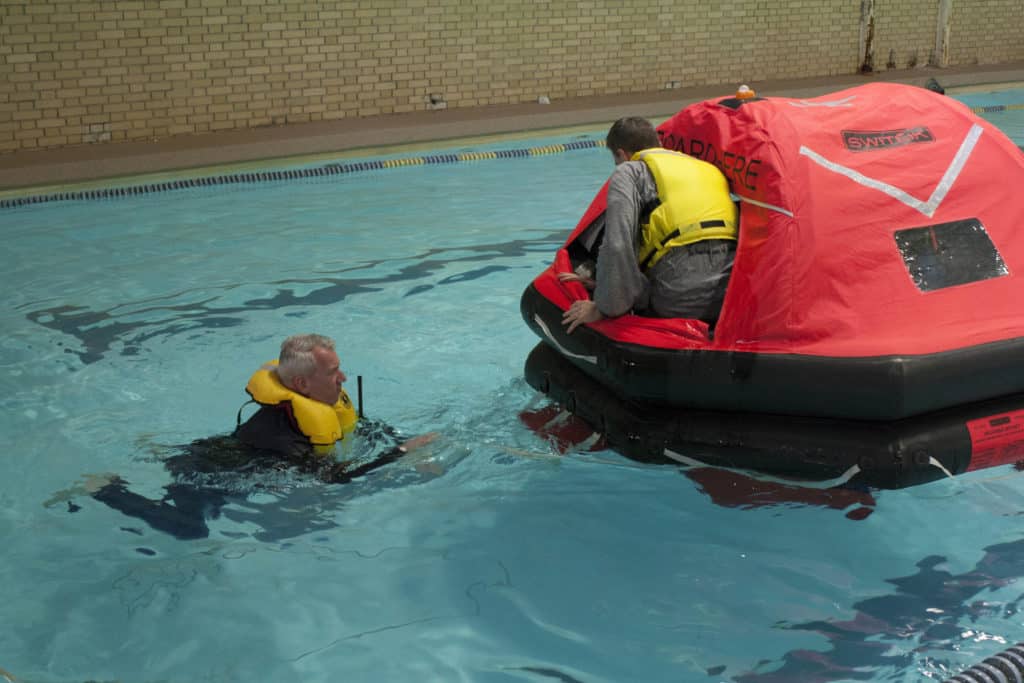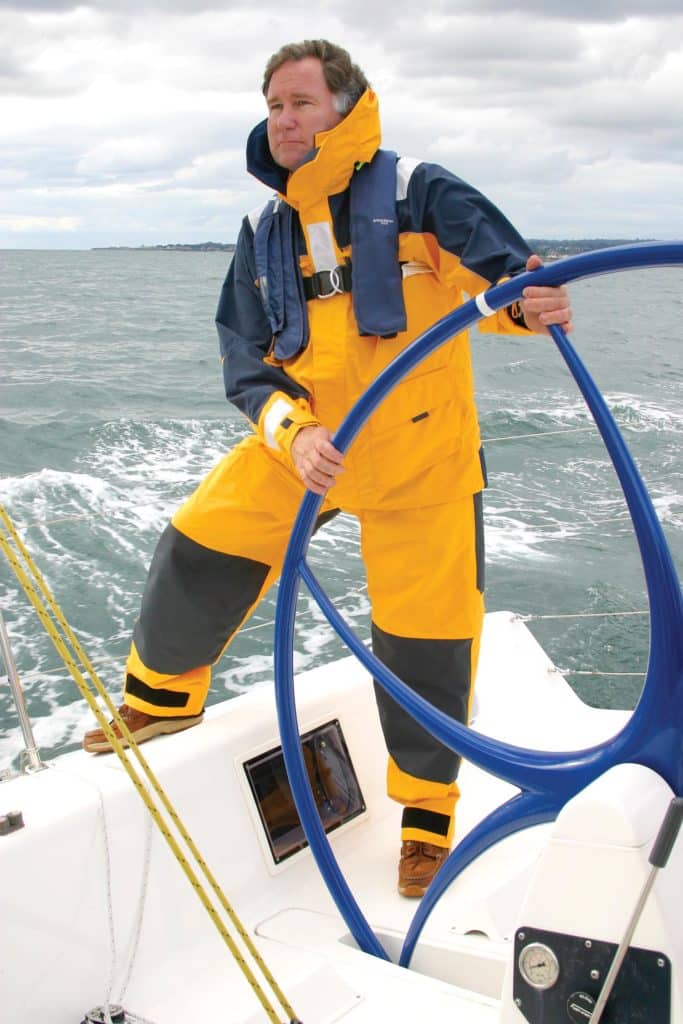

Looking through the list of afternoon seminars on the final day of US Sailing’s Leadership Forum this past February in San Diego, I found myself in the throes of a deep and personal philosophical debate: windowless meeting room or sun-splashed pool. Hmm.
There were two sessions to go on this gorgeous Saturday afternoon before the closing reception lowered the curtain on the three-day confab. In 24 hours I’d be back home in New England, with another 6 to 10 inches of white stuff forecast for my impending return. Outside, youngsters splashed from the diving board and waiters delivered cold ones to shady tables.
I was truly betwixt and between when one session jumped out from the rest. It was titled “Improving Offshore Safety with the Right Gear,” and the speaker was US Sailing Safety at Sea chairman Chuck Hawley. Confronted by the opportunity to glean some useful nuggets for our first spring issue, I decided to defer pleasure and keep the proverbial nose to the grindstone, for one more session at least.
With a few Transpacs (two singlehanded), an Atlantic crossing aboard the mega-cat PlayStation, countless forays offshore and nearly 25 years of moderating Safety at Sea seminars under his belt, Hawley has some well-founded opinions about what you should have on board. In the past I’d found his talks to be always informative, often entertaining, and, OK, it was only an hour long. I was in.
To kick things off, Hawley and his partner in crime for the day, fellow SAS moderator Bruce Brown, flashed a PowerPoint slide showing all manner of safety equipment and asked the simple question, “What would you take?”
“All of it” would be the simple answer. But then again, there’s nothing simple about allocating storage space as you provision an average-size cruising sailboat. When deciding what makes it into the sea bags and tool chest and what stays on the dock, start with the elements of good seamanship, advised Hawley and Brown, and go from there.
First, know the limits of your crew and your vessel. In that regard, attending a Safety at Sea seminar would be an excellent over-the-winter thing to do. At these sessions you’ll learn how search-and-rescue (SAR) operations work, how to prepare to abandon ship, and, short of that, how to administer first aid or effect jury-rig repairs so you can get the boat and crew home in one piece.
Breaking things down to the basics, you need to be able to keep your crew safe and water out of your boat. You should be able to reach safe harbor, if need be, and when conditions turn south, you’ll want to be able to summon help — and know who and how to call, when the time comes. So where to start?
• A good inflatable PFD and tether top the list. Modern equipment is comfortable to wear — and if maintained properly, practically infallible. Be sure to inflate and test your PFD annually or before heading out on a long passage, and bring along spare inflater cartridges just in case. Adding leg straps to the PFD greatly enhances its effectiveness when you’re in the water and it’s inflated. And it goes without saying that in boisterous conditions — think storms, rough seas or at night — the safety value of your life vest drops to nil if you’re not wearing it.
• If you don’t have one already, install a fixed-mount VHF radio and a good-quality masthead antenna (which greatly increases the radio’s range). The radio should have a registered MMSI number, DSC calling and a way to input GPS information. A similarly equipped handheld is a relatively cheap backup and a great addition to your ditch kit or dinghy.
• With an EPIRB or personal locator beacon aboard, you’ve bought into a worldwide satellite-based SAR network. Assuming you’ve registered your device (you have, haven’t you?), once you activate it, the cavalry will soon be on the way. Spending a little extra for an EPIRB with a built-in GPS will get them there even quicker.
• When coastal cruising, the closest rescuer in an emergency is often your own vessel or others in your vicinity. With that in mind, a personal MOB device that broadcasts your location via the AIS network is well worth its $200-plus price tag. The latest technology even sends out a DSC signal that triggers a radio alarm and alerts those still on the boat that you’re in the drink — priceless, as they say in credit-card commercials.
• And last but not least, arm yourself with a good signaling mirror for daytime use and one of the high-intensity LED strobes or white lights for nighttime illumination. If they’re coming for you, you might as well make yourself as easy to find as possible.
It’s spring. It’s time to open up the boat, get your gear sorted and go sailing. When you do, be safe out there.








